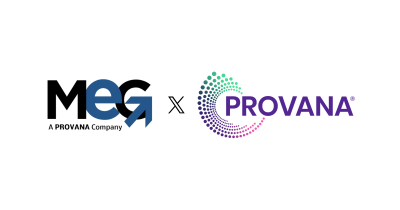10 Ways to Perform Market Research for Your Physical Therapy Practice
Over the past decade, the spread of physical therapy practices in the United States has erupted. However, so many new physical therapy practices in direct competition with one another have opened up several necessary avenues for improving technology, interventions and services and, of course, patient outcomes.
Performing comprehensive physical therapy market research has become essential to the success of physical therapy practices. Whether you’re a startup or a practice looking to expand, how do you best utilize competitor research for physical therapy practice management?
For decades, these 10 strategies have helped us and our clients succeed.
10 Market Research Strategies for Physical Therapy Industry
1. Pricing Research
A significant component of your physical therapy market research is pricing in the industry. You should look at what physical therapy practices are charging for services nationally and locally. Be sure you set a fair price compared to those around you and offer as much incentive as possible for your price range. Depending on your physical therapy business model, you may want to see what insurances are covered and what cash-pay services are offered as well.
2. Observational Research
As your patients use your physical therapy practice, take notes about their experience (from how they found you to what their first impressions were of the clinic to how they responded to your services) and use this data to identify any areas where you can improve the patient experience. By identifying and fixing any issues ahead of time, you can save your practice a lot of trouble later.
3. Interviews and Focus Groups
Finding direction through your patients’ feedback is valuable for any physical therapy practice. We encourage quick interviews with patients because it will often result in essential suggestions and guidance regarding aspects of your services that may not have been on your radar. Depending on the size of your practice, focus groups can provide helpful, crowd-sourced tips in a more controlled and collaborative process. This part of the physical therapy market research process shouldn’t be confused with the next strategy.
4. Customer Satisfaction Study
Another research strategy is customer satisfaction surveys, especially if they are automated like an NPS score. When a patient has finished scheduling an appointment or is signing out, these surveys can give you immediate insights into their feelings. Have your front desk team encourage feedback and provide surveys to patients to put a more personal spin on this technique. Based on their response, you can direct them to leave a Google or Facebook review for the clinic.
5. Competitor Analysis
Do not underestimate the value of competitor research for physical therapy practice. Take the time to study what the competing physical therapy businesses in town are doing. What services do they offer? What kind of messaging are they using? What keywords are they ranking for? This, in turn, gives you the tools to differentiate your own practice and tailor everything from your clinic design to your equipment to your services in a way that is unique and better aligned to the community’s needs.
6. Brand Awareness Survey
How known is your physical therapy practice in your community? Brand awareness surveys and questionnaires help you understand your reach. If your key demographic isn’t aware you exist, then you have something to work on. Often, this means starting with a more robust digital marketing strategy to be found online easier.
7. Product and Service Research
How are your services typically utilized, and is there a pattern or need that needs to be addressed? Do you have the products that provide the best outcomes from the services you advertise? For physical therapy practices, this research can help you understand your value to your primary audience and/or uncover if you have an audience you may not have considered. By monitoring how your clinic equipment is being used, for instance, you may discover that you can downsize and still provide the same value without taking up as much space in your clinic.
8. Market Segmentation Study
How many of your patients are athletes compared to those going through rehabilitation? A market segmentation study is helpful because it allows you to define the populace’s needs that make up your patient base. This can help you better engage in competitor research for physical therapy because you have your audience defined and their needs mapped out. To that end, the next strategy can be useful.
9. Patient Profiling
Who is the average patient who might use your physical therapy services? What are their needs, goals, and challenges? What about their budget? Typical insurance? These factors can be established through buyer persona research, allowing you to have an avatar to work from as you engage in other physical therapy market research or develop useful content on your website.
10. Campaign Research
Instituting changes in how you market your physical therapy practice is well and good, but how do you know it is effective? Is the influx of new patients because of what you’ve done, or is it a coincidence? Campaign research helps examine the marketing actions for your physical therapy practice and lets you make data-driven decisions that get the most return on your investment of time and resources.
Ready to Stand Out in Your Local Market?
MEG Business provides the private practice management strategies, programs, certifications and coaching to elevate your clinic above the competition. Request a free demo of MEG Academy to learn more.






